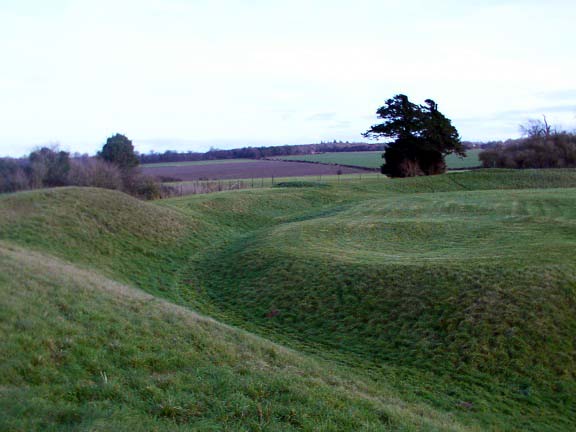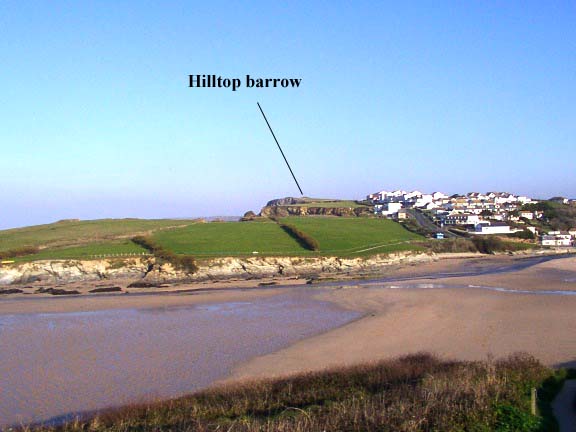

The remains of St. Syth’s chapel. You can still make out some of the worked stones but most are irregular boulders.

Ring ditch showing double yew trees

On the day we went we found these offerings left on Yew tree at edge of the site.

South-east of Knowlton Henge is this huge overgrown barrow with trees on it. It is said to have a double ditch around it (not visisble)

Katie at Badbury Rings, Boxing day 2001

View of Church showing stone at the base

Inscribed stone built into base of Church

In June 1927 the Dry stone was re-erected by the Quarrymen of Porthoustock.
The work was carried out by the orders of local bigwigs Col. Serecold and Sir Courtney Vyvyan.
Sir Courtney sponsored the event and Col. Serecold provided the beer (Good man!)



Rare sunny day in December

taken 2 dec 2001
A huge quartz menhir

Two burial mounds on Porth Island were excavated in 1872 by William Copeland Borlase. One contained brown mould and a skull; the other contained a skeleton and a small beautifully, perforated axe head containing felspar & quartz. The skeleton was replaced. Other finds on the island included coins, glass beads, rings, ceramics, and spindle whorls (small stone discs with a central hole, used for wool spinning). Remains of Iron age houses were also found which suggest that the Island was occupied between 250 – 200 B.C.





To reach the top of the ruins, two steel ladders have to be climbed.
If you wish to copy any of the photographs, please do so but please credit Charles Winpenny as the photographer, or if they are for use on your Web site, please add a link to his site.
All photographs Copyright © 2001 Charles Winpenny. All rights reserved.

The ruins are those of a 15th century chapel and hermitage where the legend tells that the leper, St. Gonand lived.

The ruins are those of a 15th century chapel and hermitage where the legend tells that the leper, St. Gonand lived.
You may regonise the site from the Omen film “The Final conflict”
If you wish to copy any of the photographs, please do so but please credit Charles Winpenny as the photographer, or if they are for use on your Web site, please add a link to his site.

The dramatic granite outcrop of Roche Rock is on the south side of the village of Roche, which itself lies on the north side of the St. Austell china clay area.
Copied with permission from
cornwallcam.co.uk
If you wish to copy any of the photographs, please do so but please credit Charles Winpenny as the photographer, or if they are for use on your Web site, please add a link to this site.

Also known as “The Old man” or “The Blind Fiddler”













